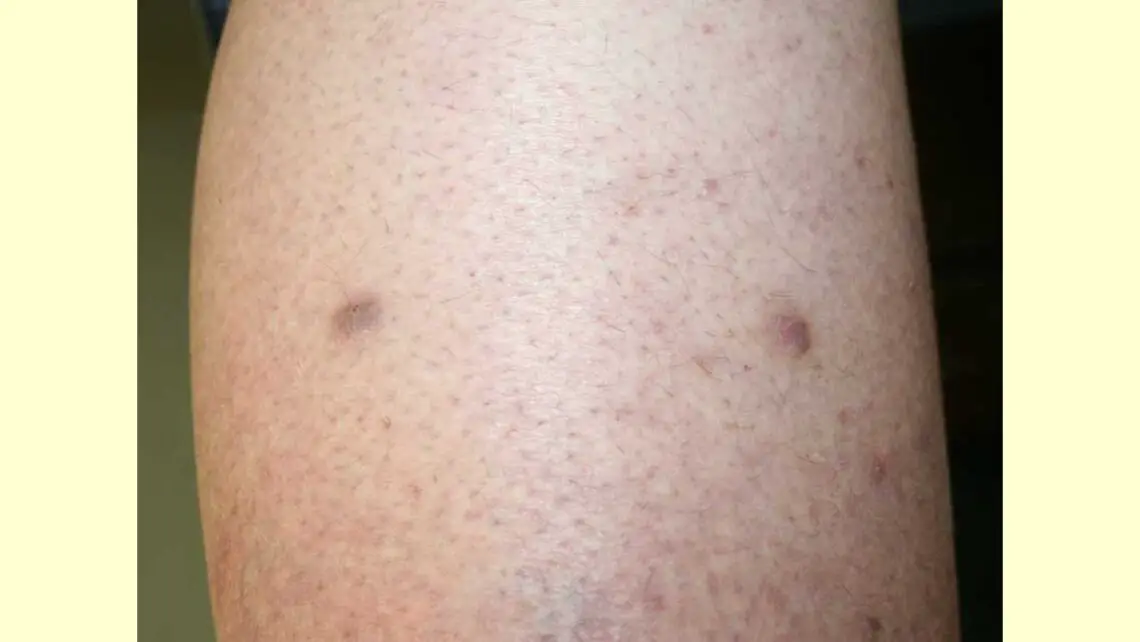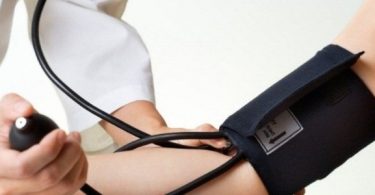Abstract
This 56-year-old female with Prurigo Nodularis that was diagnosed “incurable” by her physicians after multiple failed attempts with pharmaceutical medications was cured with a homeopathic medicine prescribed according to the Law of Similars.
Keywords: Prurigo Nodularis, sclerotic nodules, The Sensation method, homeopathic treatment of; Chromium muriaticum
The following case is formatted according to CARE guidelines (1).
Introduction
Prurigo Nodularis is a chronic dermatological condition characterized by firm, hyperkeratotic, pruritic papules or nodules that range in diameter from a few millimeters to several centimeters. The lesions usually have eroded or ulcerated components secondary to repeated excoriation, which can eventually lead to scarring and changes in pigmentation. Patients can have one nodule or hundreds of lesions, depending on disease severity.
The lesions tend to be distributed symmetrically and have a predilection for the extensor surfaces of the upper and lower limbs. The abdomen, posterior neck, upper and lower back, and buttocks are also commonly affected, whereas the face, palms, and flexural areas are rarely involved.
Prurigo Nodularis prevalence and etiology are unknown. Although it can occur at any age, the typical age range is 20 to 60 years, with middle-aged women most commonly affected. (2)
Typical first-line treatments for PN aimed at decreasing pruritic symptoms include topical antipruritics, such as ointments containing menthol or camphor; topical corticosteroids such as flurandrenolide tape (Cordran tape), oral antihistamines such as promethazine hydrochloride; oral antidepressants, such as doxepin, intralesional corticosteroids such as triamcinolone acetonide, a short course of systemic corticosteroids, unless the patient has a comorbid condition that could be exacerbated by rapid tapering of corticosteroids (eg, psoriasis). (3)
Prognosis for resolution of Pruritis Nodularis with allopathic treatments -that are mostly palliative- is poor and the disease can severely limit functioning in patients. Homeopathic medicine offers an extremely safe and effective treatment for the complete resolution of this disease without the numerous side effects of pharmaceutical treatments.
Patient Information
This 56-year-old female was first seen in September 2007. She had been suffering from a severe, chronic, dermatological condition diagnosed as Prurigo nodularis, since the early 1980s. It consisted of numerous, irregular, raised, firm, shiny, pearl-like, excoriated, disfiguring, and extremely pruritic sclerotic nodules distributed over her trunk and limbs, but sparing her face.
She had seen many doctors seeking relief, and had been given multiple courses of oral, topical, and intralesional injections of synthetic steroid medications of increasing potency, as well as oral and topical antihistamines, and other immunosuppressive drugs – all to no avail. She had been told that her condition was “incurable,” and that she’d have to ‘learn to live with it,’ which she was determined not to do.
At our first encounter, she told me: “When it’s driving me crazy, I’ll break down and cry sometimes, but even worse than the terribly severe itching is how extremely self-conscious and very embarrassed I am by it; it’s so ugly, even my grandkids point at it, and this really bothers me! I want to wear long sleeves all the time to hide it, even though the clothing can make the itchiness worse. Stress also makes the itching worse. I feel like a person with a disability, being laughed at. I was teased mercilessly as a child for being obese; I weighed about 200 pounds when I was 19 years old, and I couldn’t stand myself, I was so embarrassed, so I met the challenge and lost 75 pounds.”
I asked, “Please tell me more about your feelings of being “embarrassed” and “laughed at?”
“The way it looks, I’m way too embarrassed to wear shorts, but I wish I could because the clothes make the itching much worse. I also get itchy when I get too hot from exercise, or when I sweat, or especially when I’m in the hot sun; it’s definitely worse from getting overheated. Cool water will calm it down a little bit when it’s very itchy.”
“Please tell me a little more about “embarrassed.”
“I just hate to write! I’m not good at it; it was really really hard to write about my life history” [note: answering her homeopathic questionnaire]. “If I’m going to do something, I want to do it really well. I don’t feel that I communicate well in writing. It was a real challenge to write about myself. I had to force myself to do it; it was very challenging” (sighing loudly).
“Please tell me more about “challenged.”
“When I challenge myself, it’s generally when I’m forcing myself to do something that I don’t feel I’m good at, but I realize that it can make me a better person to force myself to do it, even though it’s very embarrassing if I don’t get it right.”
“What else is “challenging?”
“I started a Celiac Disease support group, but I’m not a natural leader. Having to force myself to get up and talk in front of people, that’s a real challenge! I hate being the center of attention. I have severe stage fright; the larger the group, the worse it is. I turn beet red, get nauseous, shaky, sweaty, then freezing chills, and get tongue-tied. I fear that what I’m saying is not coming out properly, and I feel really bad if I gave out the wrong information. I feel responsible, and extremely embarrassed!”
“What fears do you have?”
“I fear people seeing my prurigo; it draws negative attention to me; people staring at me; like something is really wrong with me; people might think I have something contagious and won’t come near me. I’m also afraid of heights; I get dizzy and queasy; I don’t do roller coasters.”
“Any recurrent dreams that you recall?”
“As a child, I had a recurrent dream of getting ready to be married, walking down the aisle, and a whole bunch of gorillas came in and chased us away, so I didn’t get to do it; I was very scared, petrified; my dad used to play act like a gorilla in real life to be funny.”
“Please describe your family relationships.”
“I was very close with my dad; he was very loving and always treated me well. He was an alcoholic, but was a very nice drunk. He was never mean or abusive.
My mom was another story. She had mental problems, which contributed to my dad’s alcoholism. When I was born, she had a total break with reality. They called it postpartum psychosis, but she had wild, manic episodes and depression that continued throughout her life. She wouldn’t talk, eat or sleep for days.
Her illness effected my childhood dramatically! Mom often couldn’t function, so I ended up taking care of my younger brothers, cleaning house, cooking, doing everything. I’d go to my cousin’s home sometimes for relief. I deeply resented my mom, especially as a teenager.
She could not be a real mom to me; there was no loving and caring from her, no physical touch, hugs or affection from mom at all. She was incapable of showing me any love, and it’s still that way. I was and still am very sad, frustrated and angry with her.” (tears welled up in her eyes).
“What are the most important things to you in life?”
“My relationship with God is number one, then my family’s happiness and safety, definitely. I also have very close friends. And, I really like to get my work done as perfect as possible. I’m a bit of a control freak in that sort of way.”
“What are your passions?”
“I love to sing; music in general. I used to play piano, flute and organ, but not well. I feel like a jack-of-all-trades and master of none. As a teenager, I taught myself to play music, learned how to cut my own hair, how to sew, do a lot of things.
I got into sewing my own clothes, because mom couldn’t go shopping, and I was too embarrassed to go to the store to buy big sizes, because I was so fat. I got really good at sewing, but my Home Economics teacher showed the class a coat I’d sown; though it looked perfect, she said it was the wrong technique. I was so embarrassed, I withdrew and hid even more.”
“Do you have any other physical problems?”
“I’ve had constipation since I was a child, but it’s much better now on a high fiber diet and Senna tea at bedtime. I’ve also had chronic sinus headaches since I was a child; I was always congested, very itchy nose and eyes, always blowing my nose, clearing my throat a lot, and I’d cough up thick, sticky mucus; it was very embarrassing. I still get sinus congestion and headaches, especially when I don’t sleep well or with any dramatic weather changes. I take Benadryl very rarely.”
“How is your energy?”
“It’s pretty good, because I exercise a lot. I force myself to get out and run every day. I run about 60 miles a week. I love the challenge of running in races, showing that I can do it, and have even won some races. I like to stay in shape.”
“How is your sleep?”
“It’s often disturbed by severe itching; it drives me crazy!”
“How are you affected by temperature and weather?”
“I hate being cold, and feel much better when warm, but my itchy prurigo is much worse when I’m too hot. My sinuses get worse with change of weather.”
“Do you have any foods that you love or hate?”
“I love sweets, especially oatmeal cake with cream cheese frosting; vanilla cake with buttery icing; salty things, salty nuts, potato chips; also, vegetables, fish, chicken. I don’t like pork, steak, sour things or hot spicy things.”
Homeopathic Case Analysis
Serious, initial attempts at symptom repertorization and materia medica study by the classical method were unproductive, so I turned to the sensation methods as described by Drs. Sankaran and Scholten.
The core issues in this case centered upon structure, function, and relationship, indicating a remedy in the mineral kingdom. In addition, the issue of conflict in relationship further indicated a salt remedy.
The main mineral themes were family, home, God, religion, work, safety, control, concern about appearances, and what others said or thought about her; this indicated the Kali series of remedies in the Periodic Table of the Elements.
The themes of feeling challenged, liking challenges, forcing herself, showing that she could do something and hiding indicated stage six of the Kali series in the Periodic Table of the Elements, which is Chromium.
Chromium has strong mental-emotional issues of embarrassment, desiring to be discreet in public, and keeping up appearances. It also has fears of being observed and criticized, and dreams of futile efforts.
Chromium imbues steel with its shiny metallic appearance and it tends to produce sticky, tough, slimy, mucoid sinus discharges; it craves sweets, salty, and fish, and has aversion to meat.
We also see in the case themes of a broken, difficult, mother-child relationship, a deficit of attention, love, care, and nurturing from the mother, with resulting anger, frustration, resentment, sadness and self-pity in the child; there is also aggravation from becoming heated, worse in the hot sun, and craving for salt, which is all indicative of Muriaticum (the chloride anion).
Plan: Due to the chronicity and severity of the skin disease, and risk of aggravation, she was prescribed an LM2 potency of Chromium muriaticum given in a single, initial dose as follows: five drops blended into four ounces of pure water, stirred 50 times, bottle succussed firmly five times, and ½ teaspoon taken once upon awakening, and then waiting five minutes before tooth brushing, eating or drinking.
Follow-Up
At the follow-up one week later, she stated: “I feel really good! I’ve had no problems with constipation at all off of the Senna tea, a big one for me. My itching subsided some after initially being very itchy. I wasn’t itching at all for three days, even without the Benadryl and Cordran tape (a high potency topical steroid she had not previously mentioned).
It’s itchy again, but not nearly as bad as it was, and I don’t sleep well, but I never have since I had kids (laughs). My sinuses are the same, but the fall is a bad time of year for my allergies.” She has been drinking one or more cups of coffee every morning.
Assessment: Good response to initial dose; possible interference by coffee.
Plan: Repeat Chromium muriaticum LM2 ½ teaspoon taken once as previously directed; limit intake of coffee.
One month later, she called to complain that she was very itchy again, and her sinuses were acting up with all the pollen in the air.
Assessment: A longer, daily period of LM dosing is required to mitigate the environmental aggravating factors.
Plan: Repeat Chromium muriaticum LM2 ½ teaspoon taken daily for one week as previously directed.
Follow-Up
At the follow-up two months later, she stated: “I really notice a big difference when I take this remedy; I’ve been really good! The prurigo is definitely healing, in fact, there are no new nodules in the last two weeks, which is very unusual. It usually takes a long time for the prurigo to heal, but they are definitely healing, which is amazing to me! I’ve generally been 50% less itchy overall. My sinuses are also doing really well.”
I asked, “How else have you been feeling?”
“My energy has been really good. My sleep has also improved from a lot less itching, and my mood has been great. No problems with constipation anymore. Overall, I’m doing really good; I’m truly amazed!”
“My local doctor told me that my cholesterol is too high, and wants me to take statin drugs, but I refused. High blood fat runs in my family. My eye doctor also told me that I have borderline high eye pressures; my mom had glaucoma.”
Assessment: Good response to the low dose LM potency; increase LM potency to sustain amelioration, and address deeper, constitutional health issues.
Labwork: Fasting VAP Cholesterol test revealed total cholesterol of 360, LDL of 201, HDL2 of 51, Lp(a) of 14, indicating familial hyperlipidemia.
Plan: Chromium muriaticum LM4 ½ teaspoon taken once as previously directed; significantly limit intake of all refined carbohydrates and sugar; use organic extra virgin olive oil liberally in food; drink more pure water daily; continue regular exercise.
Six weeks later, she called to say that she’d been doing great until she had her mercury amalgams removed by a holistic dentist, then her prurigo became itchy again and her sinuses had flared up with a constant cough from postnasal drip.
Plan: Repeat Chromium muriaticum LM4 ½ teaspoon taken once as previously directed.
At the follow-up three months later, she stated: “Overall, my prurigo is 70% better. The old scars are slowly going away, and don’t itch anymore. Whenever I’m under stress, I’ll get really itchy. My mom makes me itch out of my mind! I’ve also been caretaking my grandkids a lot lately, which can be pretty stressful. I had my last mercury amalgams replaced a few weeks ago. My sinuses have been fine this past winter. I’m tolerating my new diet well. Otherwise, I’ve been feeling fine.”
Assessment: Increase LM potency to mitigate life stress influences.
Plan: LM5 ½ teaspoon taken once as previously directed; continue dietary regimen as directed.
At the follow-up five months later, she stated: “I’m feeling great! My prurigo has subsided dramatically; there have been no new nodules in many months. It continues to amaze me after all those years of suffering, and being told that there was no cure.
The awful scars are slowly going away; they’re very embarrassing, but don’t itch anymore. I still don’t want to wear short sleeves. Since you always ask, my mood, energy, and sleep have been great, and I’ve had no sinus or stomach problems.
My local doctor checked my cholesterol again, and told me to keep up whatever it was that I was doing; he told me my cholesterol had dropped to 296, LDL to 141, and HDL had risen to 144; he said my ratio was now normal, and that I probably didn’t need to worry about heart disease. My optometrist told me that my eye pressures are now normal.”
Over the course of the subsequent eight years, she needed a gradual increase of her LM potency to LM7 due to stressful life events, and responded very well to each change in LM potency for many months.
Her old, scarred, prurigo lesions gradually healed completely, such that she was no longer embarrassed by showing her bare skin in public. She now participates in marathon races wearing running shorts, rather than long sleeve running pants, and she told me that she actually wore a bikini bathing suit to the public beaches with her family in North Carolina for the first time since the dermatological disease began in the 1980’s.
After a vacation abroad to Mexico and Central America, she acquired a severe, infectious colitis, which responded nicely to Aloe socotrina 200C in repeated doses. Afterwards, she needed a few doses of Chromium muriaticum 200C to recover fully.
Since her last dose of Chromium muriaticum 200C in February 2017, she has been feeling very well, without any complaints, and there has been no evidence of the Prurigo nodularis, the “incurable” condition with which she had originally presented to my homeopathic family medical office in 2007.






Thank you for this interesting case Dr. Fleisher. That was a very astute analysis using periodic table. Probably would not have been solved by classical methods.
Dear Dr. Fleisher,
Congratulations on finding this patient’s simillimum! As you know, prurigo nodularis is a difficult to treat dermatosis which often recurs and has no known etiology. Therefore, presenting this case helps demonstrate homeopathic medicine’s usefulness in patients which fail to heal with conventional medicine. I especially appreciate your long-term clinical follow-up.